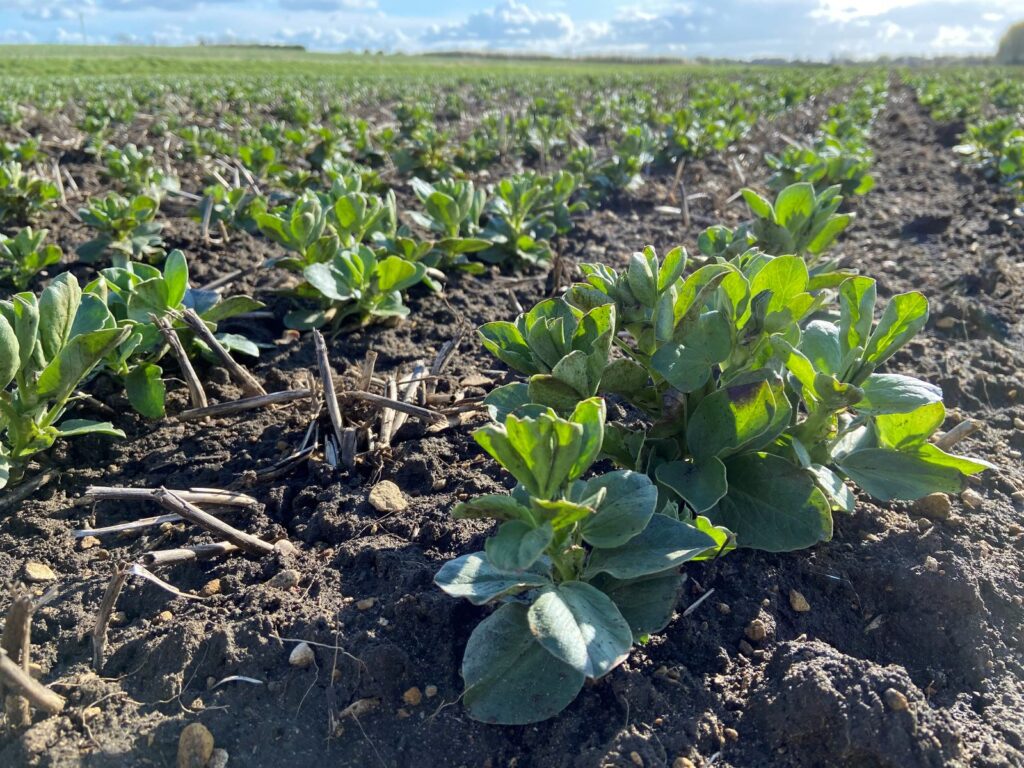Cold and wet weather increases chocolate spot risk in bean crops
12th April 2023
Established bean crops have been hit with an increased chocolate spot risk this season due to cool and wet conditions throughout March, with downy mildew also threatening new leaf growth and later emerging spring beans, Syngenta technical manager Simon Jackson warned.

Bean crop in April 2023 showing signs of chocolate spot.
Harsh winter temperatures have taken their toll on many autumn sown bean crops, with early spring recovery also hampered by unusually cold weather and heavy rain last month, leading to increased disease risk.
Mr Jackson said the impact of chocolate spot has been exacerbated where rain splash has spread spores from the lower leaves onto new growth. “PGRO disease reports have highlighted high levels of chocolate spot in some crops, along with cercospora,” he added.
In terms of control, he said the sequence of Amistar and Elatus Era has proven to be highly effective at keeping both chocolate spot and rust at bay in bean crops. However, the decision as to which order to apply the fungicides in will require careful consideration.
“Where chocolate spot is already present in the crop and conditions continue encourage the disease, it would be advisable to start the programme with an Amistar application from first flowering (GS60),” he suggested. This strategy will be particularly beneficial as temperatures start to warm up and soil moisture levels are not limiting growth.
Field assessments indicate crops that are particularly struggling could benefit from supplementary trace elements such as manganese, magnesium, and zinc, Mr Jackson noted. Although no direct correlation was found, last year’s ADAS YEN results for bean crops showed that better performing crops had received foliar trace elements.
With warmer conditions stimulating rapid compensatory growth, crops are expected to quickly develop big canopies. On the other hand, rapid development tends to make crops more susceptible to chocolate spot as the season progresses, Mr Jackson cautioned.
“The key timing for Elatus Era application is likely to be around early to mid-May for optimum disease control,” he advised. This leaves the option for a final Amistar + tebuconazole treatment towards late May or early June, which further protects crops from rust infection for the rest of the growing season.
Slow growth in spring bean crops so far this season highlights the need for on providing adequate nutrition to increase plant stand and prolong growth for as long as possible, along with disease control for green leaf retention to boost yields, Mr Jackson remarked.
“Depending on disease pressure, most spring crops still benefit from a two-spray foliar disease programme. That is likely to be an Amistar treatment in early June, followed by Elatus Era in early July when the crops have built a full canopy,” he added.
Furthermore, PGRO has reported that weather conditions this season could also result in increased downy mildew infections. The disease typically affects emerging spring beans, but has also been widely identified on the new growth of winter beans in similar high-risk conditions.
An EAMU (20130917) is available for the fungicide SL567A, containing the highly systemic metalaxyl-M, to control downy mildew infection on emerging leaves in field bean crops.
